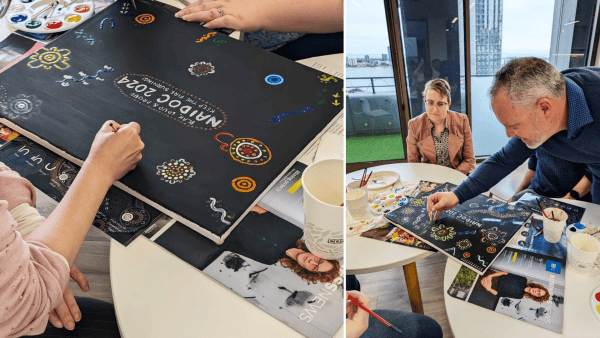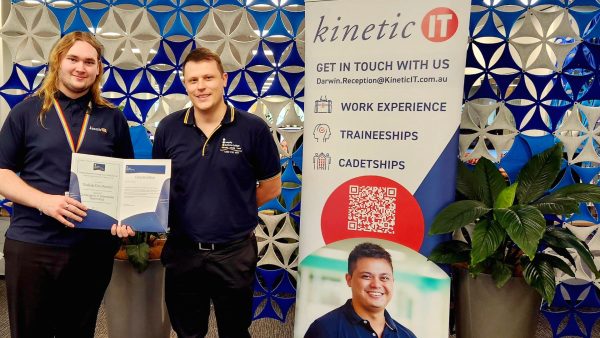Renowned IT professional Michelle Major-Goldsmith is leading the global charge to develop the International Standard for SIAM, otherwise known as Service Integration and Management, with the aim to provide consistent guidelines for industry professionals and organisations. In this insight, Michelle pulls back the curtain on what the standardisation process involves, and what global SIAM professionals can expect to see, and when.
Setting the International Standard for SIAM
IT service management today is markedly different to what it was 20 years ago. The emergence of newer methodologies and frameworks, such as Agile and DevOps, being applied within IT environments has risen steadily, with our industry generally clued up on what these look like in practice. However, our understanding of what the International Standard for SIAM, or Service Integration and Management, looks like is still being determined.
For the past two decades, IT service management, of which SIAM falls under, has been benchmarked against the same International Organisation for Standardisation (ISO) framework – ISO/IEC 20000 – which is focused more towards traditional service management practices, particularly within frameworks such as ITIL. With SIAM’s adoption on the rise, the time is now to develop the International Standard for SIAM, adding to the global bank of knowledge that the IT industry can then revisit time and again.
I’ve taken up the voluntary role of editor for ISO/IEC 20000, Part 14 – Service Integration and Management, an eagerly anticipated update which is poised to make its entrance very soon. Crafted to tackle the contemporary challenges that service management within complex multi-provider ecosystems face, I’ve been joined by highly respected industry professionals Finbarr Callan and Peter McKenzie to pull together this important body of work.
Ahead of the publication of the International Standard for SIAM later this year, I’ve answered a couple of key questions about what international standards are and why the addition of a SIAM specific chapter is important. You can follow me on LinkedIn if you’d like to know more.

RELATED CONTENT: What’s trending in SIAM: 3 key insights from the Global SIAM Survey
What is ISO?
ISO is the International Organisation for Standardisation; IEC is the International Electrotechnical Commission. Both organisations form the specialised system for worldwide standardisation, and together they develop and publish International Standards.
ISO is an independent, non-governmental international organisation with a membership of 168 national standards bodies. Through its members, it brings together experts to share knowledge and develop voluntary, consensus-based, market-relevant International Standards that support innovation and provide solutions to global challenges.
Standards certify organisations – not individuals – against best practices. If you work in the industry, you may be familiar with the International Standard (ISO9000) for quality, or ISO27000 for security and 20000 for IT service management. They assure that an organisation meets prescribed requirements, enhancing trust in their business operations. Certifications in International Standards help drive continuous improvement and signal an organisation’s commitment to excellence and fostering success in the marketplace.
What is the International Standard for IT service management?
ISO/IEC 20000 is the internationally recognised IT service management standard, providing a framework for organisations to establish, implement, maintain, and continuously improve their IT service management system. It helps organisations ensure their IT services meet the needs of their customers and stakeholders effectively and efficiently.
Parts 1 and 2 are probably the best known in the service management world:
- ISO/IEC 20000-1: Specifies the requirements for establishing, implementing, maintaining, and continually improving an IT Service Management System (SMS). It is the core standard that organisations can use to achieve certification for their IT Service Management practices.
- ISO/IEC 20000-2: Provides guidance on the application of the requirements specified in ISO/IEC 20000-1. It offers more detailed explanations and examples to help organisations understand and implement the standard effectively.
For IT service management, there are a range of other International Standards chapters relating to cloud, implementing change, guidance for terminology and concepts and plenty more. You can read about them on the International Standards website. The keen-eyed folks in the IT industry will be well aware of gaps in the current International Standard – these relate to parts that may have been decommissioned or are still under development. That’s where the International Standard for SIAM comes in.
RELATED CONTENT: Australian Taxation Office chooses Kinetic IT as Enterprise Service Management partner
Why develop an International Standard for SIAM now?
This new ISO chapter is set to stand out as a significant addition. Focused specifically on service integration and management, Part 14 will hold special relevance for organisations tasked with overseeing multiple service providers and integrating their offerings to provide a smooth and cohesive IT service experience for end-users.
SIAM’s utility shines in scenarios where IT services are procured from diverse sources, necessitating efficient coordination and collaboration for streamlined operations. It’s well-timed, too, as we’ve seen through the Scopism Global SIAM Survey that the appetite for SIAM in IT has grown significantly – the methodology is now used in more than 60 countries, across a range of industries and large, complex organisations.
The International Standard for SIAM will ensure consistent delivery and the provision of guidance for what ‘good’ looks like.
What will the International Standard for SIAM deliver?
ISO/IEC 20000 Part 14 will provide guidelines and requirements for implementing SIAM practices within an IT Service Management System. It will aim to address key aspects of SIAM, such as governance, coordination, collaboration, and the management of interfaces between service providers.
The standard will help organisations establish effective processes and controls to ensure that the delivery of IT services from multiple providers is well-coordinated and meets the overall service objectives of the organisation.

When can I access the International Standard for SIAM?
International standards go through a systematic process to ensure they are well-defined, widely accepted, and consistent across countries and industries.
The development of international standards involves several key steps from proposal through to planning, drafting, revision and review. Once the standard is approved, it is published and made available to the public.
The publication date is still to be confirmed but it is expected to launch early November 2023.
RELATED CONTENT: Embrace complexity – Navigating VUCA in service management
Our role in developing the International Standard for SIAM
Kinetic IT is a leading Australian-owned technology services provider, with more than 1400 experienced professionals based in most major capital cities. A key component of Kinetic IT’s success has been our dedication to proven processes and frameworks, including service integration and management.
We’ve been in the fold with SIAM from the early stages, with our first major milestone publishing the ‘Who is the King of SIAM?’ research report through AXELOS in 2015. In 2016, we became founder members of the SIAM Foundation Body of Knowledge architect group, after which Kinetic IT was asked to be the lead architect of the subsequent SIAM Professional Body of Knowledge, published in 2017 and refreshed in 2020.
Following various thought leadership pieces and keynote speaking spots across Australia and the world, it made sense that we should take the lead in developing this new International Standard for SIAM!
We have extensive practical experience, too. Kinetic IT has been actively involved with implementing SIAM for several organisations, often as the service integrator, but also to provide consulting around the design of an organisation’s SIAM model. As such, we have experience with applying the theory to specific circumstances and it’s these experiences that have led to being invited to lead the 18-month project to develop the International Standard for SIAM.
Coming soon – the International Standard for SIAM!
ISO/IEC 20000 provides a robust framework for organisations to improve their IT service management practices. By implementing this standard, organisations can achieve enhanced service quality, customer satisfaction, and operational efficiency, leading to better business outcomes and a competitive advantage in the market.
As ISO/IEC 20000 Part 14 is still at the final draft stage, its content and specific requirements may be subject to further revisions and approvals before its official publication. But it’s been my pleasure to lead this work on behalf of my fellow colleagues in the SIAM practice to ensure that the industry has the right tools and resources it needs as it grows.
In an age where efficiency, adaptability, and innovation seamlessly coalesce, assuring the success of your IT services becomes pivotal. The question then beckons: Are you prepared to embrace the vanguard of standardised practices for the future?
To stay up-to-date on the latest developments and releases of ISO/IEC 20000 Part 14, visit the International Organisation for Standardisation (ISO) or the International Electrotechnical Commission (IEC) websites. Keep your eyes on the Kinetic IT website, too, as we will share more when the International Standard for SIAM is released.














